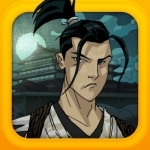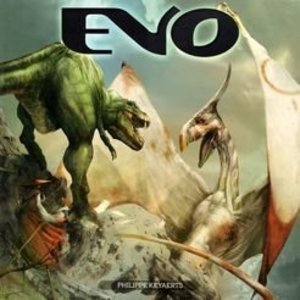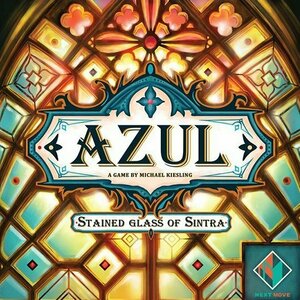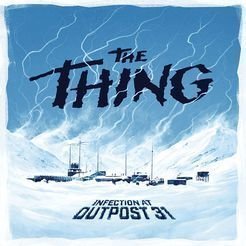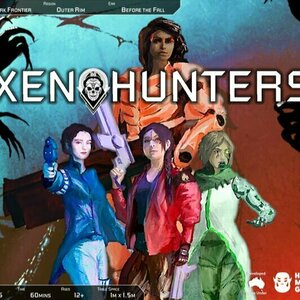
Planica Ski Flying
Games
App
********************************************************** WELCOME ski jumping & flying fans to...
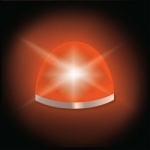
Remote Patrol
Business and Utilities
App
----> Works great with iOS 8, looks great on iPhone 6 & 6 Plus too Remote Patrol is a full featured...

EyesOnYou DashCam Plus
Navigation and Travel
App
EyesOnYou Plus is the ad free version. EyesOnYou App is a dash cam application on you iPhone....
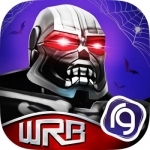
Real Steel World Robot Boxing
Games
App
STAR ROBOTS ARE HERE! Fight the greatest ranked robot brawlers among 100 million WRB players in...
Purple Phoenix Games (2266 KP) rated Evo (second edition) in Tabletop Games
Oct 11, 2019
Evo pits its players against one another in a clash to populate an island too small for everyone to enjoy harmoniously. It’s a… Small (dino) World, if you will. By improving your clan’s dinosaurs, survivability, and vigor you may be able to establish the most prosperous clan. At least until the meteor hits and wipes everyone off the face of the island anyway…
DISCLAIMER: We do not intend to cover every single rule included in the rule book, but will describe the overall game flow and major rule set so that our readers may get a sense of how the game plays. For more in depth rules, you may purchase a copy online or from your FLGS. -T
Evo is played over several phases over several turns. Exactly how many turns is unknown because the end game is denoted by a randomized meteor token. To setup Evo shuffle the meteor token into the bottom few climate rotation tokens and set them as a stack face down. These will be the round trackers and also will dictate how the climate may change from round to round. Set the climate wheel on the starting space and within view of the players. Shuffle the event cards and place them face down near the enhancement bid board. Give each player the mat, dinomeeples (yay I got one that makes sense!), and bidding totem of their chosen color. Lay the correct map for the amount of players on the table and have each player place their dinomeeples on the corresponding starting spaces on the map. Give each player their starting money (in VP chips). Determine the starting initiative order and place the totems on the bid board in that order. Set aside the combat die and you are finally ready to play!
The first phase of the game is Climate. (after the first round) A new climate token will be revealed which directs the players to adjust the climate wheel or keep it status quo. The climate wheel determines which spaces on the map will have cold, hot, Death-Valley-type, or safe climates for dinos to live on. This is known information at the beginning of the round so the players can plan out the rest of the round to keep their dinos safe before the culling.
The next phase is bidding on enhancements. Draw from the bag enough tokens for the players to quarrel over and place them randomly on the bid board. In initiative order players will bid on enhancements using their VP chips. When a player is outbid for an item they must place their bid totem on another item. Once all players are winning bids on items they pay the supply for their winnings and add it to their mat in the appropriate slots. These could include items to help a dino survive the cold, increase their attack potential, give their dinos more movement (or walks, as we call them), and other special abilities.
Now that the players are enhanced a bit more, their dinosaurs can move on the map. This may be necessary for some, but not all, depending on how they have enhanced their dino clans. A dino can move as many spaces as feet are shown on the player’s board, or the total movement can be split by multiple dinos. The more feet, the more movement. If, during the movement phase, a dino wishes to enter a space currently inhabited by a rival clan’s dinomeeple a combat will occur. Combat is determined by comparing horns and defenses and the roll of the combat die.
Once movement is over, it’s time for the dinos to get saucy – it’s baby-making time! I mean, it’s reproduction time! That’s not appropriate either. You can create one more dinomeeple to place on the map adjacent to another dino. This is how you may expand your empire of cute dinomeeples.
Once these phases are complete the players will consult the climate wheel to see which of their dinos are safe from elimination. For those dinos that are safe a player will earn 1 VP. Play continues in this fashion until the round that the meteor token is flipped from the stack of climate tokens that typically start a round. As the meteor destroys all dinomeeples on the map players will total their VPs and the winner is the clan leader with the most VP at game’s end.
Components. There are a LOT of components in this box. One of the best components in the game is the well-designed box insert. As you unpack the game you can really just setup right out of the box. The maps, bidding board, and climate wheel are normal-style game boards and of good quality. The cards are OK and get the job done. The die is a painted wooden die and it’s fun to roll. The climate tokens, VPs, and enhancement chips are all thick cardboard. The play mats are a matte cardstock (and that’s fine because it just holds your components). The other components are the cloth bag for enhancement draws and those cutie little dinomeeples! Everything is really well-produced and has held up really well for us. My only minor minor complaint is that I wish the dinomeeples were a different shape per color, but everyone having brontosauri is fine with me too. The art. The art is SPECTACULAR on this one. Seriously really great artwork. The cards, the boards, the playmats, the enhancements. Everything looks just amazing.
I kinda already let you know that I love this game. So I am not going to wax poetic here and go into some long analyses of why I love it. It is a more-involved Small World (I hope you caught that shameless reference in the intro) that uses dinosaurs instead of fantasy race/class combos. You know Evo is great when you can compare it to an already-great game from the same designer. I also think you could play Evo and Small World back-to-back and have an enjoyable experience. They are similar, but offer a different experience FOR SURE. I know this one is tough to find nowadays, but please, if you see it for sale in the wild PICK IT UP. It’s a great game that will offer years and years of play for you and your game group. Purple Phoenix Games gives this one a prehistoric 16+ / 18. I say “plus” because I may change it to a 6 in the future. It’s that good.
Purple Phoenix Games (2266 KP) rated Azul: Stained Glass of Sintra in Tabletop Games
Oct 15, 2019
For many years you have worked as a tile layer, creating uniquely beautiful mosaics that adorn walls all around the world. Taking your expert skills, you’ve decided to hone your talent into a new form of mosaic decoration – stained glass windows. Select the most colorful glass combinations to create elaborate and beautiful designs, all while being careful not to waste or break any of your supplies in the process! Years of tile-laying have resulted in a steady hand, but glass is a different story. Does your talent and eye for design transcend materials, or are you better left to your familiar ceramic tiles?
Disclaimer: I do not intend to rehash the entire rulebook in this review. I will briefly go over the turn order, but will leave the specifics for you to discover in the rulebook! – L
Like Azul, Azul: Stained Glass of Sintra is a game of pattern building, set collection, and tile placement. To set up, each player receives a palace board, 8 double-sided pattern strips, and glazier (pawn) in their chosen color. All players need to select the same side, A or B, for their palace boards, but the pattern strips can be placed with either side face-up. Place your glazier above the left-most pattern strip, and you are ready to go! The designated score-keeper sets up the score board – placing each players’ scoring cube on the score track and broken glass track, as well as randomly placing 1 tile of each color on the round tracker. Much like OG Azul, a certain number of factories are in play, each populated with 4 pane tiles. Now the game can begin!
On your turn, you may do one of two things – Advance a pattern, or Move your glazier to the left-most pattern strip. If you choose to advance a pattern, you complete these three steps: Select pane pieces of one color from a factory or the middle of the table, place the pieces on one of your pattern strips, and check to see if the pattern is complete. Easy enough! There are a few placement restrictions to keep in mind, and they are detailed in the rulebook. Moving on, after placing your tiles, if the pattern strip is not yet full, your turn is over and play continues with the next player. If you have successfully filled the entire pattern strip, you get to immediately score that window, and then your turn ends. Specific steps for scoring are found in the rulebook. The other action available to you on your turn is to move your glazier back to the left-most pattern strip. Once you do this, your turn is over. Play continues over six rounds, and the player at the end of the game with the most points is the winner!
So how does Azul: Stained Glass of Sintra hold up? I think it’s a pretty great game. It’s very mechanically and thematically similar to the original Azul, but there is enough of a difference in gameplay that keeps it interesting. It doesn’t just feel like the exact same game to me, even if there are many similarities between the two. There definitely is a good amount of strategy involved, and I think the addition of the glazier (which can sorta restrict your placement options) adds a new level of complexity to the game. Do you dare ‘waste’ a turn to reset your glazier, or do you risk the points and try to complete your current pattern strip?
Another great thing about this game is the variability of it. Each player receives 8 double-sided pattern strips to begin the game. The strips can be placed with whichever face up or down that you want. So no two players will ever have the same setup, just as you will probably never have the same setup yourself between plays. One wrong placement could maybe end up costing you the game! There is no ‘right’ setup, and the fact that everyone’s setup will be different makes the game a little more unique.
Of course, the components are great and the tiles are so much fun to handle. Unlike OG Azul, these tiles are semi-transparent and crystalline, giving them the semblance of actual glass. The pattern strips/palace boards are good, sturdy cardboard, and can definitely withstand the amount of manipulation they see each game. My one qualm is with the score tracker. Instead of moving linearly, the score tracker moves kind of zig-zag-y around the board, and it takes me a minute sometimes to read the points and move my marker quickly because my eyes have to figure out the score line. Yeah, it looks cool, but its just a little inconvenient for me while playing.
Overall, I think Azul: Stained Glass of Sintra is a great ‘sequel’ to Azul. It feels familiar in mechanics and theme, but different enough in overall gameplay that I think it is a good stand-alone reimplementation. And guess what? Another Azul game is in the works! Titled Azul: Summer Pavilion, it is yet another game of tile drafting/placement and set collection. Since I have high praise for Stained Glass of Sintra, I am definitely looking forward to this newest version of Azul, coming soon! Purple Phoenix Games gives Azul: Stained Glass of Sintra, a colorful 9 / 12.

VivaVideo - Best Video Editor
Photo & Video and Social Networking
App
VivaVideo is one of the best Video Editor, Movie Maker, Slideshow/Photo Video Editor with Powerful...
Fred (860 KP) rated The Thing: Infection at Outpost 31 in Tabletop Games
Mar 7, 2018
The first game I played, we had 6 players. We played the game wrong & had 3 infected. Even though we had too many infected, I was still able to pick all 3 infected. One I torched, 2 I got with the blood tests. Because the humans are able to talk about what cards are given to the captain with each mission, it's too easy to figure out the infected, unless the infected plays the game as a human & totally straight. Because of that, the game is boring as it was too easy for the humans to beat the missions & that it was a guarantee the game would get to the escape portion with no problem. During the game, the danger level didn't get past the third spot, so the danger never affected the missions. Far too easy for the humans. One friend, who was infected, played 2 sabotage cards & we easily figured out he was infected. The other 2 I guessed because of the way they acted. Not the way they acted in the game, just the way they acted. After the game, I suggested that we not be allowed to say what cards you give to the captain. I suggested we say either we can help with the mission or we cannot help. One friend disagreed & said it would be too easy for the infected to win the game by destroying 4 rooms or making 8 missions fail. I disagree.
Due to the arguments of my one friend, we decided it was up to the captain as to whether the cards were told during their missions. This doesn't work because only an infected would want to not have the cards said. As I mentioned, in the first game the danger level only moved up to the third spot. In the second game, we played with 8 players. The danger level only moved up once. Once! There is no suspense when the captain looks at his cards & says "No sabotage." because it's known the infected are playing the game as human, because they'll give themselves up otherwise. And once you're found out, you're left out for much of the game. I was infected in the second game. The first infected in fact. Every time I was chosen for a mission, it was with 3 or 4 player teams & would have been too easy to figure out I was the infected if I sabotaged the mission. So, I played the game straight to the end. It was only when my friend accused me of being infected & I gave up my "tell" that he was adamant I was infected. So again, it had nothing to do with the game, but rather reading my face.
So, basically, if you wanted, you could hand out the blood sample cards, accuse people of being infected, read their faces & guess who's infected without having to bother with the nonsense of the missions. Give the guesser 2 blood tests, because you're guaranteed to still be in danger level 1 & have 2 blood tests anyway. If the missions were exciting, I'd be all for it, but most of them aren't. It's just seeing who has the right cards, which with so many players, you're guaranteed to beat it.
And so, my suggestion of not being allowed to tell what cards you're given is one of the ways to fix this game. Yes, it may be easier for the infected to cause trouble, but without this change, there is no trouble, no sense of danger, no chance for the infected to win, unless they get lucky & get in on the escape. Without that chance of causing trouble, the game is monotonous & is just a big guess at the end. Another way I thought of fixing the game is throwing in a random card during a mission. Just draw an extra card, without looking at it, mix it in with other cards & then see what happens. That may seem unfair because then the mission may be too easily won (even more easily than they already are) & so I suggested another way. If a mission parameter is to have a choice of number of players, for example 4-5 players, then the captain can only choose a 4 player team & the 5th player would be a random card. This way, not every mission will have a random card drawn for it.
Anyway, I do like the game, but feel it could be made into a great game with some kind of tweak to fix this major problem.
Purple Phoenix Games (2266 KP) rated Xenohunters in Tabletop Games
Mar 22, 2021
In Xenohunters one player will act as the main alien force while the other players will divvy up the four hunter characters to oppose. The alien wins when the human threat is eliminated and the humans win once the alien threat is eliminated or once the space station has been blown up with a bomb and at least one human survivor leaving on the spaceship. Tensions run high and every being is on high alert. So let’s get into this! Pre-disclaimer: as this game has many delicate rules I will be giving a high-level overview of gameplay and more opinion on my plays at the end.
DISCLAIMER: We were provided a prototype copy of this game for the purposes of this review. These are preview copy components, and I do not know for sure if the final components will be any different from these shown. Also, it is not my intention to detail every rule in the game, as there are just too many. You are invited to download the rulebook, back the game through the Kickstarter campaign, or through any retailers stocking it after fulfillment. -T
To setup consult the rules until the table looks similar to what is shown below. Beware: this game does take up quite a bit of table real estate to plan accordingly and use “the big table.”
Xenohunters is played in rounds until one side has achieved their win condition, as explained above. The aliens, or “Xenos,” will take their turns first, and then the human squad is able to take theirs. Xenohunters offers a loose turn structure in that each character is allowed two or three actions to take, but the actions and the characters on each side may take turns and actions however they wish in any order they wish. So the Xenos could move Alien 1 (not the name given in the game), then activate something with Alien 2, and then two more actions with Alien 1 before Alien 2 completes their turn. And same goes for the human squad.
Much of the game revolves around movement within the space station, either visible or hidden. Players are able to use abilities, gain special cards, hatch alien eggs, move through the vents, block doorways, and bomb individual rooms on the path to victory. Once a human player is attacked and killed, they immediately switch sides and can be respawned as a Hybrid Spawn that belongs to the Xeno team. The remaining human players are now at a disadvantage toward satisfying their victory condition and have another alien hunting them down.
Play continues in this loose turn fashion until one side can claim victory and the game ends.
Components. Again, this is a rough prototype printed and assembled in house at Half-Monster Games, so it is possible that many of the components will look very different when finalized. That said, I truly enjoy the art style featured on many components, and though the game tone is very dark and brooding (not typically my style), the majority of component choices are well done and well suited for this style. I wish I could see a finalized version to truly comment on, but from what I was provided I believe the game will look amazing once complete.
Gameplay. This is where I wanted to spend most of my preview. This game reminds me of a cross between Escape from the Aliens in Outer Space, the wildly-popular (right? I don’t play it so I don’t really know) Among Us digital game, and most tabletop RPGs on the market. I make these comps because in the former, all movement is hidden until something bad happens. Here in Xenohunters movement is hybrid hidden and visible, but players should try to remain hidden as much as possible. The first game played did not value hidden movement as much and the Xenos won rather quickly by just barreling through the space station and unleashing hellish damage on the humans. In Among Us only the Impostor can travel through vents (right?) and here in Xenohunters only the aliens are able to use the vents initally; the humans will need a special item card in order to use the vents, and even then it is only one time.
Once a player meets on the same space as another player from the opposing team combat can begin. I comped RPGs as well, and combat in Xenohunters utilizes an Aim value that is like an AC of an opponent in that the die roll will need to meet or exceed the Aim value for the attacker or else no damage is dealt. Each Xeno and human has their own stats for Aim, Health, Carry, and Speed, which are all self-explanatory. Humans can use an action to Rummage at certain map locations in order to gain cards that are beneficial in combat, movement, additional actions, and even the coveted Bomb and Detonator cards. In this fashion I see influences from RPGs in Xenohunters.
So what do I think about the game? Well, I have never been great at hidden movement games, and while this one is not solely reliant on that one mechanic I am still bad at it. This does not at all diminish my enjoyment of the game, and I do quite like it. Xenohunters uses mechanics from other great games and employs them pretty well. Yes, the rules are always being improved, even from this point (I am using Rules v.0.9.6), but once this is complete I feel it will be an excellent game to have in one’s collection. I personally have zero games utilizing hidden movement mechanics, so this will certainly fill a niche in my collection that I have neglected.
I love the theme and premise of the game, and it seems ripe for expansions. I can see many new human characters that can be added, more maps and scenarios, and even more big bads being thrown in to increase the difficulty. I have no idea if these are planned at all, but Xenohunters is laying the groundwork for a bevvy of expansions that can be added. The artwork is great (though not final on all pieces), and I know Half-Monster Games is going to give it special treatment to make it really pop.
I am very much looking forward to monitoring the Kickstarter campaign for this one as I think it is an excellent concept and brings horror to the table without being overly graphic and gory. I will not be playing this with my son any time soon (he is four), but when he is old enough I will definitely be introducing him to Xenohunters. While I am not great at this game, I very much look forward to playing lots more and practicing my strategies so I can one day challenge Jack (the designer) at a convention… whenever those happen again.
